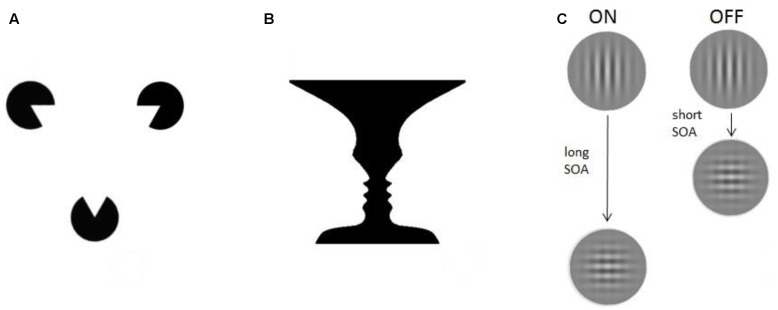FIGURE 1.
Experimental paradigms. Three different examples of consciousness paradigms: (A) Illusions. The Kanizsa triangle consists of three spherical figures, each of which misses a triangular portion (pac-men). When placed in a proper configuration the figures induce an illusory percept of triangle-contours (Kanizsa, 1976). (B) Multistable paradigms. The vase/faces figure provides a well-known demonstration of bistable perception: the same visual stimulus can alternately induce the perception of either a vase or two faces (Rubin, 1915). (C) ON–OFF paradigms. The visual masking paradigm, for example, uses two stimuli presented in spatiotemporal proximity. Depending on the time between them (stimulus onset asynchrony, SOA) the participant is conscious (ON) or not conscious (OFF) of the vertical grating.

